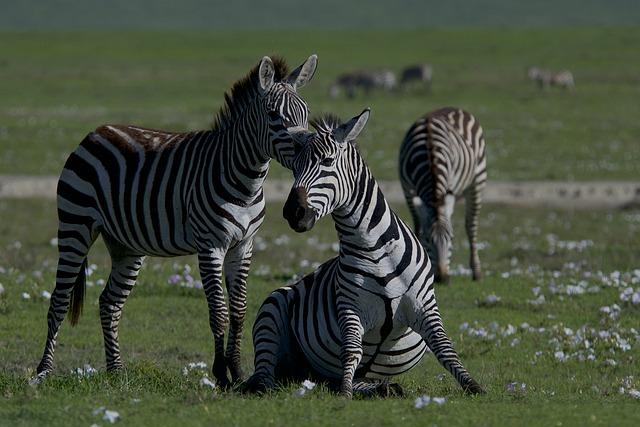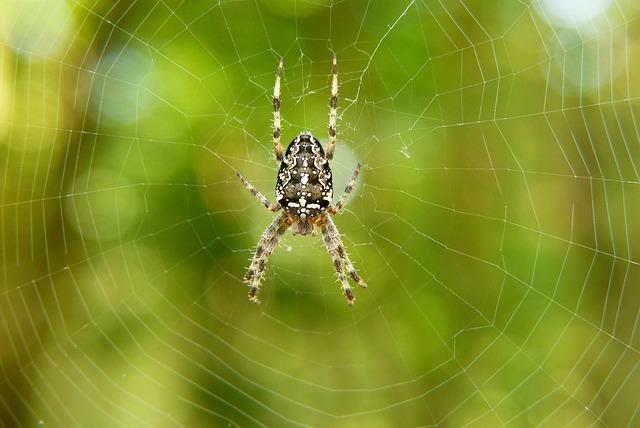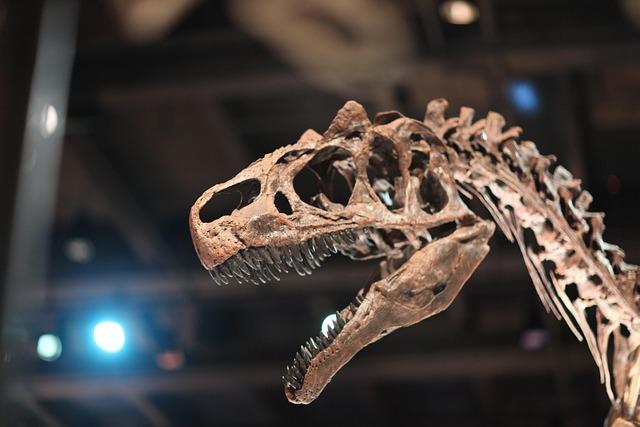In a exceptional discovering that pushes the limits of our figuring out of prehistoric lifestyles, paleontologists have unearthed a 30-million-year-old carnivore cranium within the arid landscapes of Egypt. This atypical in finding, described as not like the rest noticed earlier than, has ignited pleasure inside the clinical neighborhood as researchers delve into the consequences of its unique features. Fossils incessantly function home windows into the far away previous, revealing the evolutionary paths and ecological dynamics of historical ecosystems. Then again, this actual specimen items a puzzle that demanding situations current classifications, prompting questions on the range of carnivorous species that when roamed the Earth. As scientists meticulously analyze this cranium, they hope to discover insights now not best about the creature itself but in addition in regards to the environmental stipulations of its time, providing a deeper figuring out of the evolutionary narrative that has formed lifestyles on our planet.
Importance of the Discovery in Working out Historical Ecosystems
The recent discovery of a 30-million-year-old carnivore cranium in Egypt gives a groundbreaking perception into historical ecosystems, revealing information about predator-prey dynamics that experience lengthy remained a thriller. this extraordinary fossil now not best provides to our figuring out of extinct species but in addition illuminates the biodiversity that when thrived in historical habitats. Such reveals permit paleontologists to piece in combination the residing stipulations of prehistoric animals, showcasing how they tailored to their environments and interacted with different species. wisdom received from this cranium can supply treasured context for meals webs and ecological stratification of the time.
Additionally, this discovery affects how we interpret evolutionary pathways and environmental adjustments over thousands and thousands of years. It highlights the significance of figuring out historical local weather stipulations, geographical shifts, and useful resource distribution. To exemplify this, we can believe a number of important implications:
- Evolutionary Research: The fossil would possibly include traits that trace at evolutionary shifts in carnivorous characteristics.
- Local weather Signs: Research can point out local weather stipulations that fostered distinctive lifestyles bureaucracy.
- Species Interactions: The cranium supplies proof of predator-prey relationships that may reshape our figuring out of ecological steadiness.
through integrating findings from this cranium with current fossil data, we will be able to assemble a extra complete image of the traditional ecosystem, its population, and their intricate relationships. Working out those dynamics offers us a clearer view of the way lifestyles on Earth has developed, providing courses that resonate even in nowadays’s environmental demanding situations.

Description and Options of the Distinctive Carnivore Cranium
The hot discovery of a 30-million-year-old carnivore cranium in Egypt has unveiled a exceptional specimen that defies classification inside recognized prehistoric species. The cranium reveals distinctive morphological characteristics that counsel it belonged to a in the past unidentified genus. Researchers have highlighted a number of unique options that stand out on this historical carnivore:
- Ordinary Dentition: The tooth show off a aggregate of serrated edges and distinct put on patterns, indicating a numerous vitamin that most probably integrated each massive and small prey.
- Tough Jaw Construction: The jawbone is phenomenally robust, suggesting the facility to ship tough bites, an adaptation for looking greater animals.
- Cutting edge Cranial Options: The cranium shows distinctive crests and depressions that would possibly have been used for species popularity or social interplay.
This historical cranium now not best provides a brand new piece to the puzzle of carnivore evolution however additionally raises a number of questions on the environmental and ecological conditions of its time. In line with initial research, the skeletal construction signifies diversifications to a dynamic habitat, in all probability characterised through quite a few prey and aggressive pressures from different predators.Beneath is a abstract desk highlighting one of the key anatomical options of this atypical in finding:
| Function | Description |
|---|---|
| Age | 30 million years |
| Duration | Approx. 40 cm |
| Weight | Estimated 5 kg |
| Habitat | Numerous ecological settings |

Implications for Evolutionary Biology and Species Classification
The invention of a 30-million-year-old carnivore cranium in Egypt items fascinating implications for evolutionary biology. this in finding now not best demanding situations current paradigms in regards to the evolution of carnivorous species however additionally means that the diversification of such species could have befell in surprising areas. The anatomical options of the cranium, characterised through its unique morphology, trace at an ecological area of interest that might reshape our figuring out of predatory behaviors in prehistoric ecosystems.Researchers are now confronted with the duty of reevaluating phylogenetic bushes that have lengthy been thought to be strong, doubtlessly main to an entire overhaul of the way we classify carnivorous mammals.
Moreover, the implications prolong to species classification and the connection dynamics inside historical meals webs. This newly exposed specimen encourages scientists to discover a extra intricate community of species interactions and evolutionary pathways. Key questions get up relating to its relation to each fashionable carnivores and different prehistoric species:
- what characteristics does this carnivore percentage with its fresh opposite numbers?
- May this discovery represent in the past unknown migration patterns?
- How does this fossil affect the timeline of carnivore evolution on a broader scale?
The prospective to combine this cranium into current classifications may result in a extra dynamic figuring out of the evolutionary historical past of carnivores, the place adaptability and environmental pressures significantly form the trajectory of species building.

Insights into the Paleoenvironments of historical Egypt
The invention of a 30-million-year-old carnivore cranium in Egypt sheds mild at the historical ecosystems that when flourished within the area. This era, referred to as the Oligocene Epoch, used to be characterised through a numerous array of wildlife, atmosphere the degree for important evolutionary adjustments. The fossils unearthed divulge clues about the paleoclimate, which used to be markedly other from nowadays’s arid atmosphere. Scientists have hypothesized that the world used to be as soon as coated in lush forests and wetlands, offering a wealthy habitat for more than a few species, together with the newly discovered carnivore.
The carnivore’s cranium gives distinctive insights into its vitamin and behaviour,suggesting that it’ll have been a top predator in its ecosystem. This discovery lets in researchers to piece in combination the intricate internet of lifestyles all through that time and perceive how historical species interacted with their atmosphere. Key options of the paleoenvironments of historical Egypt come with:
- Numerous Flowers: Proof suggests the lifestyles of tropical and subtropical plant lifestyles.
- Wetland Ecosystems: Fossilized stays point out the presence of lakes and rivers teeming with aquatic lifestyles.
- Various Fauna: A variety of mammals and reptiles tailored to other niches inside the setting.
The consequences of this discovery prolong past simply the fossil itself. Via inspecting sediment layers and surrounding fabrics, researchers hope to create a complete image of historical ecosystems that thrived thousands and thousands of years in the past. Such findings can surely assist us higher perceive climatic shifts over eons, contributing treasured knowledge to the ongoing dialog about biodiversity and conservation efforts in our fresh international.
Fostering Long run Analysis and Exploration in Paleontology
The fresh discovery of a 30-million-year-old carnivore cranium in Egypt opens up thrilling avenues for paleontological research and exploration. This exceptional in finding, characterised through its distinctive options, demanding situations current understandings of prehistoric ecosystems and carnivorous species. Researchers now have the probability to delve deeper into a number of important facets, together with:
- Organic Classification: Investigating how this species suits into the evolutionary tree, along recognized carnivores.
- Cultural Context: inspecting the geographical and environmental stipulations all through its lifestyles.
- Variety of Species: Uncovering attainable new lineages or in the past unidentified kinfolk.
- Comparative Anatomy: Inspecting its bodily characteristics in relation to fashionable carnivores.
Moreover, this discovery may stimulate collaborative efforts amongst international paleontologists, resulting in joint expeditions and analysis initiatives geared toward unearthing identical fossils in the area. Such collaborations can foster a multidisciplinary manner, combining insights from geology, biology, and local weather science.To facilitate this, a devoted analysis community may be established, focusing on:
| Analysis Center of attention | Possible Results |
|---|---|
| Ecological Research | figuring out predator-prey dynamics of the technology. |
| paleoenvironment reconstruction | Insights into local weather adjustments and their results on fauna. |
| Fossil Relationship Tactics | Refining timelines of extinction and evolution. |

The Position of Generation in Unearthing Prehistoric Fossils
Generation has revolutionized the box of paleontology, enabling researchers to find and analyze prehistoric fossils with unparalleled precision.Complex imaging tactics similar to 3-D scanning and CT imaging permit scientists to visualise the inner buildings of fossils with out destructive them, uncovering main points that have been in the past hidden. Additionally, the usage of geospatial mapping and drone generation has streamlined the method of surveying huge spaces the place fossils would possibly exist, considerably expanding the possibilities of finding new specimens. Fields like bioinformatics additionally play a essential position, helping scientists in deciphering advanced knowledge units and reconstructing evolutionary histories with exceptional accuracy.
Within the fresh discovery of a 30-million-year-old carnivore cranium in egypt, those technological developments performed a pivotal position. Researchers applied state of the art apparatus to hold out meticulous excavations and research of the in finding. The cranium, characterised through distinctive morphological options, used to be mapped the usage of high-resolution imaging to assist identify its lineage and ecological position. The findings spotlight the need of using interdisciplinary approaches, the place complex applied sciences intersect with conventional paleontological strategies, thereby unlocking the mysteries of our planet’s far away previous.

the Manner Ahead
the hot discovery of a 30-million-year-old carnivore cranium in Egypt marks a vital milestone in our figuring out of prehistoric lifestyles. this exceptional discovering now not best provides a new bankruptcy to the evolution of carnivorous mammals but in addition highlights the significance of endured paleontological analysis in the area. As scientists diligently paintings to analyze this distinctive specimen,it guarantees to yield precious insights into the ecological dynamics of historical ecosystems and the evolutionary pathways of carnivorous species.The implications of this discovery prolong a long way past the limits of Egypt, providing a glimpse into the advanced tapestry of lifestyles that when roamed our planet. Keep tuned to The Day-to-day Galaxy for additional updates in this groundbreaking discovery and different thrilling tendencies within the international of science and exploration.
Source link : https://afric.news/2025/02/24/30-million-year-old-carnivore-skull-discovered-in-egypt-and-its-unlike-anything-seen-before-the-daily-galaxy-great-discoveries-channel/
Creator : Ava Thompson
Post date : 2025-02-24 13:54:00
Copyright for syndicated content material belongs to the related Source.



